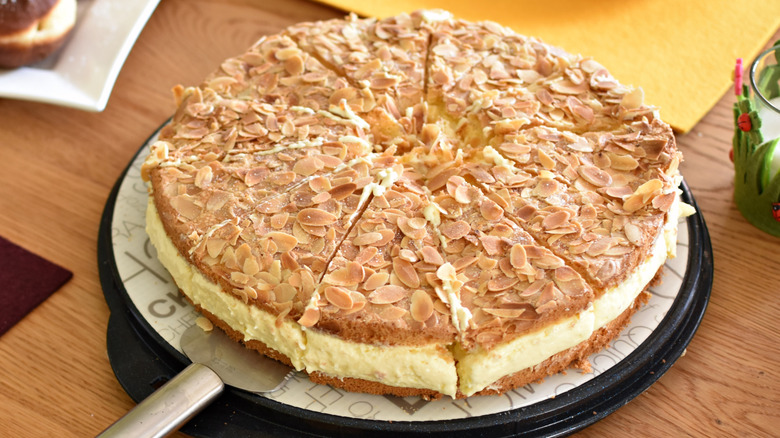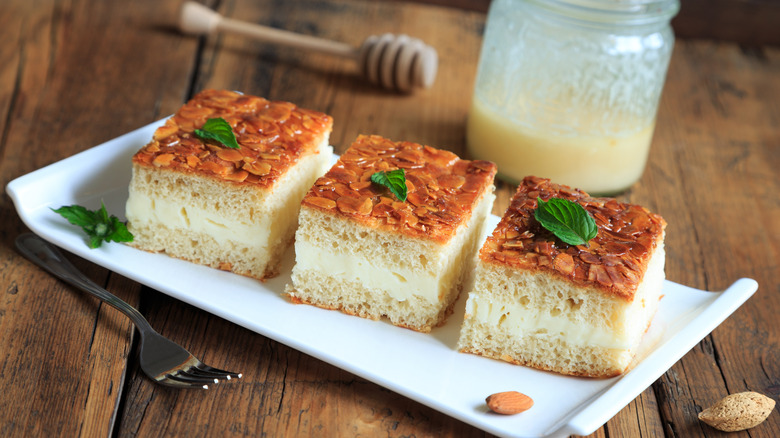Bee Sting Cake Is The Perfect Way To Add A Something Sweet To Your Oktoberfest
The centerpiece of Oktoberfest is always the beer, which is why the traditional start to Oktoberfest includes the mayor of Munich, Germany tapping the first beer keg. Still, Oktoberfest involves plenty of feasting too, from German-style pretzels to potato pancakes and sauerkraut. No matter where you're celebrating Oktoberfest, eventually, the revelers will want some dessert after all that beer and food. Bee sting cake, or bienenstich in German, is a perfect dessert to end a hazy night — and it goes well with the beer too.
Bee sting cake gets its name because one of its main ingredients is honey, but the dessert is a little more elaborate and complex in its overall flavor and components. Bienenstich is baked with yeast to create a sweet dough that's somewhat bread-like, and it's got a thick layer of honey-glazed almonds on top and a layer of creamy vanilla custard in the center. When all of it's put together, the resulting bee sting cake includes a mix of crunchy, chewy, and sticky textures with a rich, creamy filling. Its flavor is sweet but not cloying, and it doesn't truly have much of a "sting" like the name suggests. It's possible, however, that the "sting" portion of the name refers to something else in the cake's history.
Germany's old honey cake
The history of bee sting cake is a little hazy, but it likely goes back to at least 15th-century Europe. Legend says it was invented to celebrate a small battle in Andernach, one of Germany's oldest towns; invaders from a neighboring town attacked, only to be repelled when young bakers began lobbing beehives at them. That may be exaggerated, but the recipe's long history is likely why the cake's texture is similar to bread — modern bienenstich uses sweet yeasted dough for the central part of the cake, which is how you typically make sweet bread or rolls. Back at the cake's inception, cake and bread were made almost identically; "cake" was simply bread that was sweetened with nuts or honey, similar to bienenstich.
This means bee sting cake may be older than Oktoberfest itself, which began as the celebration of a royal wedding in Munich during the early 1800s. Regardless, bienenstich makes for a great pairing with the beer you'll be drinking. While different regions vary on whether their "Oktoberfest" libation is a dark or light beer, the traditional Oktoberfest beer is a Märzen, a malty lager with a toasted, caramel flavor that pairs well with the honey-glazed almonds on bienenstich.

